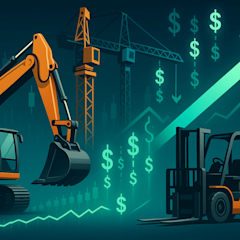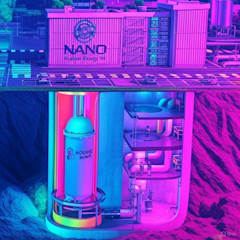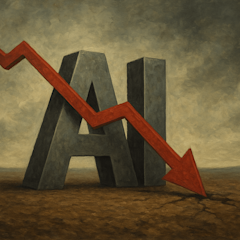
The Hidden Genius of the “AiPhone”
You’re standing in the middle of a sprawling Arizona desert.
The sun beats down.
Heat trembles in the air, bending the horizon.
Somewhere nearby, a billion-dollar facility rises from the ground, built with a staggering 12,000 tons of steel… enough to build thirty Boeing 747s.
Our experience of AI is often as something intangible — an ethereal entity, purely digital, floating in “the cloud.”
But the reality of AI is anything but light or invisible. It’s industrial. It’s material.
It’s built on physical infrastructure so massive and energy-hungry…
It feels closer to the steel mills of the 20th century than the soft shangri-la tech companies like to sell.
This is a new challenge for companies that grew up in a world where their biggest assets were lines of code and server farms hidden from view.
They’re now forced to wrestle in a new arena — atoms.
From securing rights to rare earth metals and water to building mega-facilities in deserts…
They wade into industries that demand expertise in logistics, resource management, and geopolitics — fields far removed from writing code.
In the last three years, Microsoft, Meta, and Alphabet have collectively spent over $370 billion on expanding both physical and cloud infrastructure, with quarterly investments now exceeding $140 billion.
They know:
It's not just about chip performance anymore; it's about who can secure the bandwidth and power to scale.
Indeed, Nvidia’s H100 chips, designed to accelerate AI workloads, are marvels of engineering.
However, a single deployment of these chips can require more than 20 MW of electricity — equivalent to the power consumption of 16,000 homes in the U.S.
It’s tempting to imagine salvation in the return of “elemental energy.” Sure, there’s abundant gas in the Texas Permian Basin, and nuclear power might make a flashy comeback.
But for all the promises of these solutions, they’re not immune to the same logistical hurdles — distribution, scalability, cost.
And the irony:
When Bigger Is Not Better
In tech, the initial wave of innovation almost always emphasizes scale — bigger, faster, stronger.
But the long-term winners are often the ones who figure out how to do more with less. Efficiency, accessibility — these are the metrics that define the future.
Thus, the plot twist: AI dominance won’t inherently come from fortress-like data centers but from those enabling widespread access.
This sets the stage for a potential future that’s different than most AI analysts envision.
And brings us to the rise of “edge computing” — a system where data is processed locally on devices or nearby networks.
As the current constraints become more acute, edge computing is emerging as a practical alternative.
And its rise reflects a pretty massive paradigm shift.
By decentralizing computation to local devices, such as smartphones or IoT systems, edge computing reduces reliance on massive, centralized data centers.
Each machine handles part of the workload, making it possible to run complex AI tasks — and, for the most part, without the need for large data centers.
This distributed model comes with additional benefits: it improves privacy and minimizes latency, making it critical for real-time applications like autonomous vehicles.
This approach is more flexible, cost-efficient, and allows smaller organizations to access powerful computing without owning all the hardware.
And some of this innovation is emerging from an unlikely contender: Apple.
Yes, the AiPhone
Known for its tightly controlled ecosystem, Apple is now exploring how to shrink the AI burden down to devices in our hands.
Meaning, they want to be able to process tasks on devices themselves.
Imagine running powerful AI models locally, on an iPhone or Mac, without tethering to energy-hungry data centers.
If Apple succeeds, it could turn the AI arms race into something more personal — private, even.
Takeaway: The future of AI isn’t just being built in sprawling deserts or billion-dollar facilities.
While there’s indeed money to be made there…
It’s also being built on the edges.
And, as usual, we’re on the lookout for new opportunities in this emerging space.
Want More Paradigm Mastermind Group?
Do you like this content? Would you like to know more? Because we have this and much more to share with you. Get started today!









